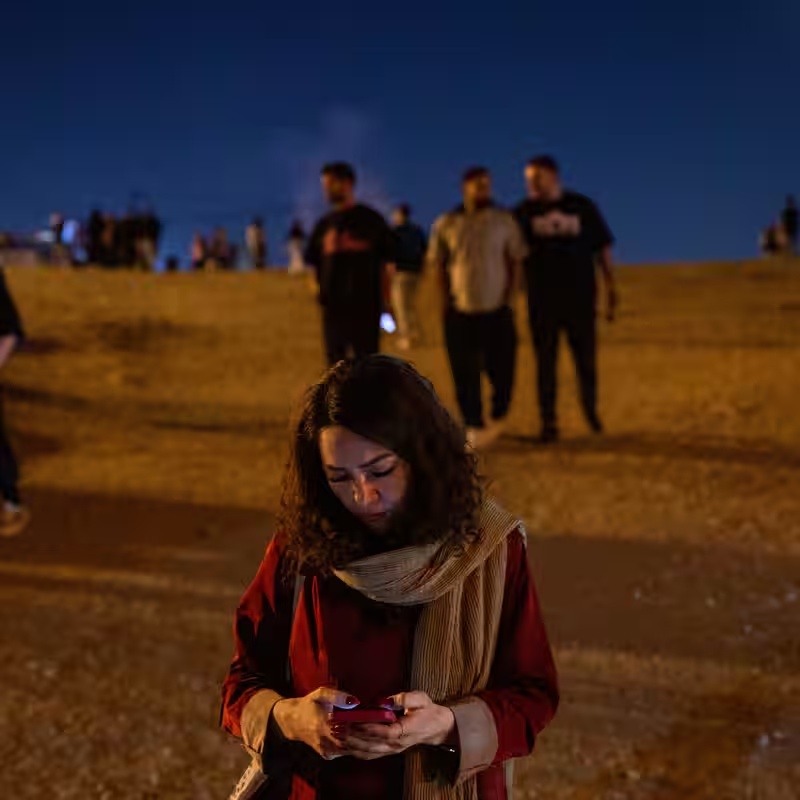Table of Contents
- The New Normal of Disconnection
- What Is a ‘Stealth’ Internet Shutdown?
- Daily Life in a Digital Siege
- The Spy in Your Pocket: GPS Jamming and Surveillance Fears
- Global Reactions and Technical Analysis
- Sources
Iran’s Internet Shutdown: The New Normal of Disconnection
In the wake of its brief but intense conflict with Israel in June 2025, Iran has erected a digital iron curtain around its citizens. What began as a temporary security measure has evolved into a prolonged and sophisticated campaign of internet restrictions, fundamentally altering how Iranians connect with each other and the outside world .
The government officially justified the initial blackout as a necessary defense against Israeli cyberattacks on its critical infrastructure . However, months later, the internet remains throttled, and new tactics like GPS jamming have emerged, painting a picture of a regime increasingly reliant on digital isolation to maintain control .
What Is a ‘Stealth’ Internet Shutdown?
This isn’t your typical internet blackout. Experts have dubbed Iran’s 2025 strategy an “imperceptible shutdown” or a “stealth shutdown” . Unlike the total blackout of 2019, which was a blunt instrument, the current approach is far more insidious.
Technically, Iran remains “globally reachable” on the internet. The country’s networks are still connected to the global backbone. However, the government has effectively severed real-world access for its citizens by restricting all consumer traffic to a walled-off, domestic intranet known as the National Information Network (NIN) . This means users can only access services hosted on local servers, cutting them off from the global internet while maintaining a facade of connectivity .
Key Differences: 2019 vs. 2025 Shutdowns
| Feature | 2019 Shutdown | 2025 Shutdown |
|---|---|---|
| Type | Total Blackout | “Stealth” or “Imperceptible” Shutdown |
| Global Connectivity | Completely severed | Technically present, but inaccessible to users |
| User Access | No internet at all | Limited to domestic intranet (NIN) |
| Primary Goal | Suppress protests | Long-term control & surveillance |
Daily Life in a Digital Siege
For ordinary Iranians, the consequences are severe and deeply personal. Day-to-day tasks that the rest of the world takes for granted have become major ordeals.
- Communication: Messaging apps like WhatsApp and Telegram are largely inaccessible, forcing families to rely on unreliable domestic alternatives or expensive, government-monitored phone calls.
- Business: Online businesses that depended on international platforms or payments have collapsed. Freelancers and remote workers have lost their livelihoods.
- Education & Information: Students cannot access international academic resources or journals. Journalists and researchers are cut off from global news and data.
- Navigation: The widespread jamming of GPS signals makes using navigation apps a frustrating exercise in futility, impacting everything from delivery drivers to emergency services .
The Spy in Your Pocket: GPS Jamming and Surveillance Fears
Beyond just restricting access, the government’s actions have sparked a new wave of fear about digital surveillance. The deliberate jamming of GPS signals is not just about causing inconvenience; it’s a powerful tool for obfuscation and control .
By disrupting location data, the state can make it harder for citizens to organize or document events in real-time. Simultaneously, the walled-off NIN provides a perfect environment for comprehensive monitoring of all online activity. Every search, every message, and every click within the domestic network can be logged and analyzed by state security services, creating a pervasive climate of self-censorship .
Global Reactions and Technical Analysis
The international community and digital rights organizations have condemned Iran’s actions. Technical analyses from firms like Censys and Nym have confirmed the near-total nature of the disruption, with one report noting a staggering 97% fall in internet usage during the initial blackout phase [[2], [10]].
This new model of censorship represents a dangerous precedent. It demonstrates how a state can maintain a veneer of normalcy while effectively imprisoning its population in a digital cage, a strategy that could be emulated by other authoritarian regimes worldwide .




